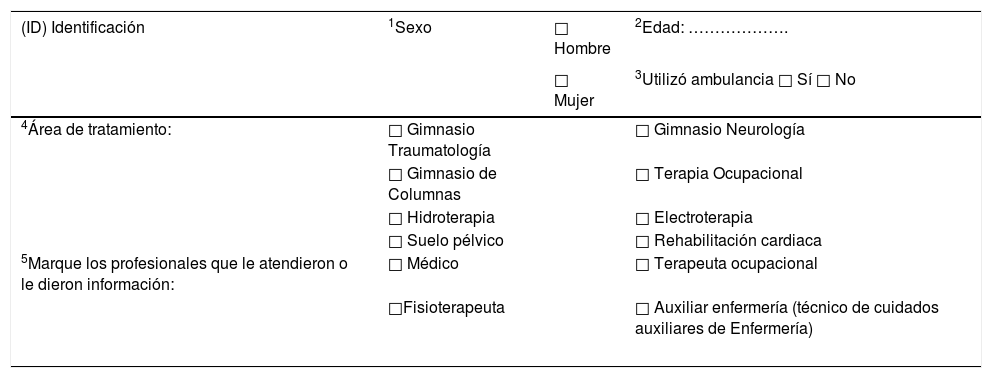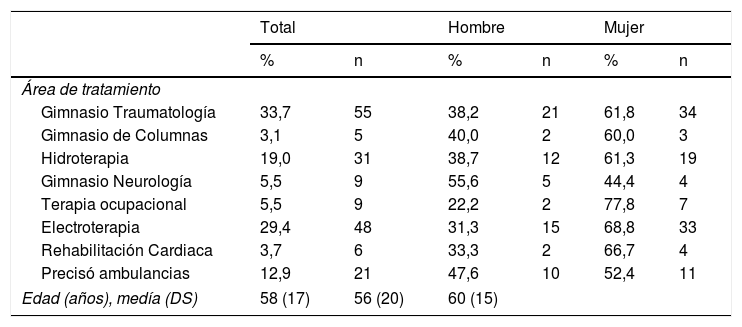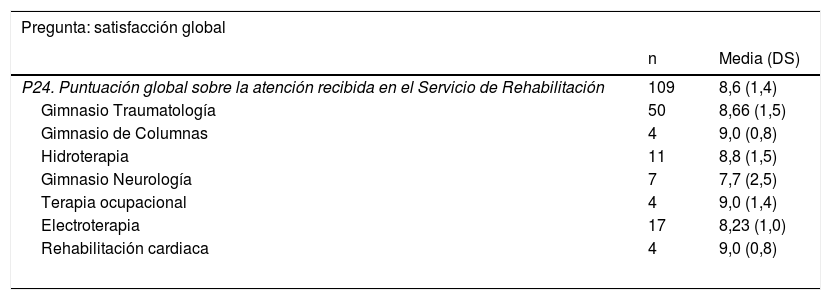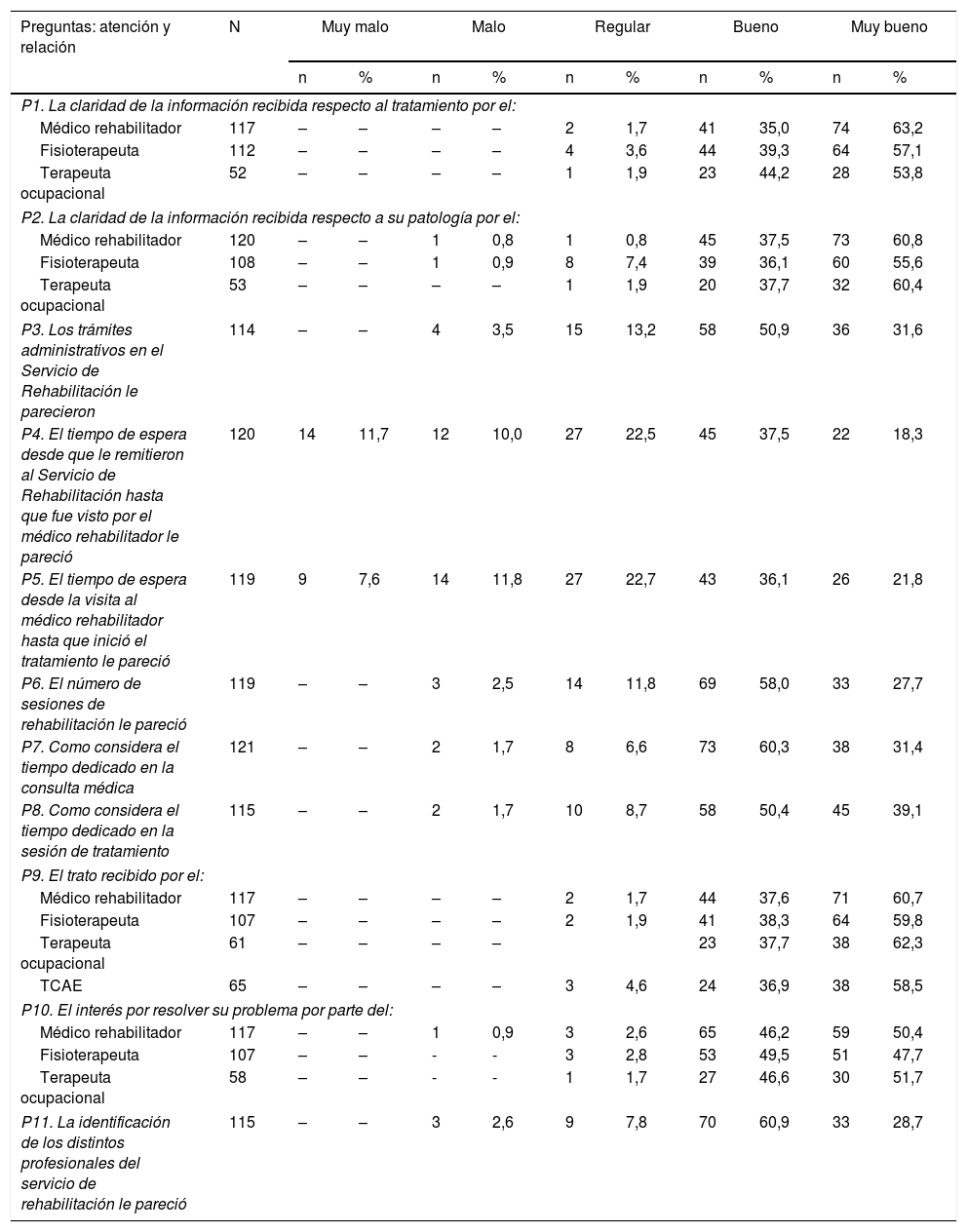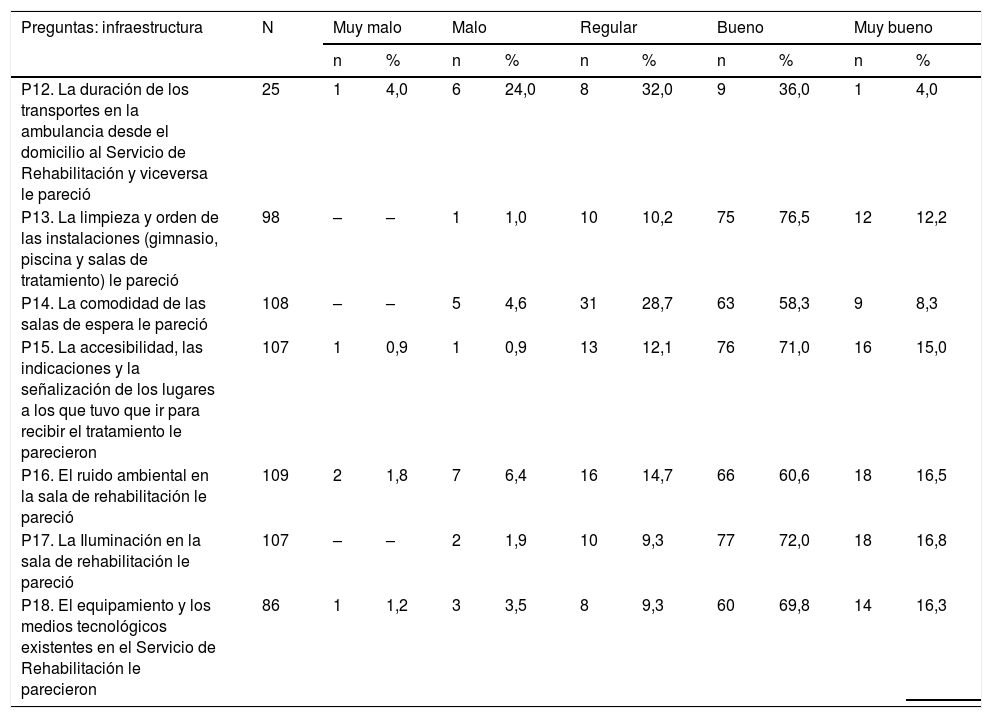Conocer el grado de satisfacción de los usuarios del Servicio de Rehabilitación, mediante la elaboración y realización de una encuesta de satisfacción.
Material y métodosEstudio descriptivo transversal. Usuarios de Rehabilitación del Complejo Asistencial Universitario de Salamanca (CAUSA). Cálculo tamaño muestral con precisión del 7% y nivel de confianza del 95.
Elaboración cuestionario estructurado, con 24 ítems, validado con índice alfa de Cronbach y coeficiente de correlación intraclase. Entregado en el momento del alta del tratamiento. Variables de estudio sociodemográficas, administrativas, atención recibida, condiciones de las consultas, información y trato, identificación profesionales, tiempo de espera y grado de satisfacción global. Análisis estadístico mediante t de Student, chi al cuadrado, correlación y regresión lineal múltiple.
ResultadosTotal: 163 pacientes, durante el periodo agosto-octubre del 2016. Edad media 58 años; 59 hombres, 104 mujeres. Resultados globales satisfactorios, con una satisfacción global media de 8,6/10. El 87,5% de los usuarios encuentran mejoría tras el tratamiento. De entre las variables estudiadas, muestran resultados favorables (> 70% bueno o muy bueno) información recibida, trato, tiempo dedicado, etc. Mientras que datos negativos, siendo áreas de mejora detectadas: tiempo de espera consulta (55,8%) y tratamiento (57,8%), servicio de transporte (40%), comodidad sala de espera (66,6%), número informes de alta recibidos (59,5%), así como presencia de facultativo de referencia ante cualquier evento relacionado con su problema de salud (49,6%).
ConclusionesObjetivamos un nivel de satisfacción alto de nuestros usuarios, si bien hemos iniciado las acciones para la corrección de las áreas de mejora detectadas, dentro del enfoque de calidad asistencial de nuestro servicio.
To determine the degree of satisfaction among users of the Rehabilitation Service through the design and administration of a satisfaction survey.
Material and methodsA cross-sectional descriptive study was conducted in users of the Rehabilitation Service of the CAUSA (Spanish acronym for the University Healthcare Complex of Salamanca). The sample size was calculated with 7% precision and 95% confidence level. A 24-item structured questionnaire was designed and was validated with Cronbach's alpha index and intraclass correlation coefficient. The questionnaire was administered at the time of discharge from treatment. Study variables consisted of sociodemographic and administrative variables, the healthcare received, the conditions of the consultations, the information provided and personal dealings, staff identification, waiting time and overall degree of satisfaction. The statistical analysis was performed using Student's t-test, the chi-square test, correlation and multiple linear regression.
ResultsThere were 163 patients during the period August-October 2016. The mean age was 58 years. There were 59 men and 104 women. The overall mean satisfaction score was 8.6 /10. Most users (87.5%) improved after treatment. Among the variables studied, favourable results (> 70% good or very good) were obtained for the information received, personal dealings with staff, time spent, ... etc. Areas of improvement were waiting time for the consultation (55.8%), treatment (57.8%), transportation service (40%), waiting room comfort (66.6%), the number of discharge reports received (59.5%), and the presence of a physician to be contacted if the patients needed to discuss any matter related to their health problem (49.6%).
ConclusionsSatisfaction was high among our users. Measures have been implemented in the areas of improvement detected, within the quality of care approach of our service.
Artículo
Comprando el artículo el PDF del mismo podrá ser descargado
Precio 19,34 €
Comprar ahora








